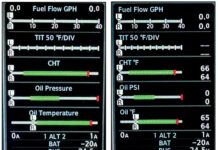When I took my first flying lesson at age 18, I knew…nothing. I even thought a stall was killing the engine, like when I let the clutch out too fast in my car. But I learned, and after only a few hours I was performing aerodynamic stalls with aplomb, if not expertise. Years later, still a private pilot, a friend introduced me to a prolonged stall where you didn’t recover and just keep the wings level with rudder. We called that the “falling leaf” after the swaying back and forth that occurred.

Of course, every new airplane checkout I got included a stall or two. I knew how to stall, and more importantly, recover from a stall. Doesn’t everybody?
Apparently not. The FAA has released new training requirements for airline pilots that include stalls. I believe the reason this is necessary is because the FAA goofed in the first place.
A private pilot must demonstrate an actual stall and recovery. But, an ATP only has to correct at the first indication of an impending stall. Perhaps this difference is supposed to teach us to avoid stalls, kinda like the change made years ago where private students were taught spin avoidance, not actual spins.
To make matters worse, the FAA had the airlines emphasize this during training—we never had to recover from actual stalls. In the sim, we would level at 10,000 feet, in landing configuration, chop power, turn and maintain altitude. Wait for it. Wait for it. Before the actual stall, with the first horn, light or stick shaker (depending on the airplane), level the wings, decrease the angle of attack a bit, apply full power and clean up as speed returned. In essence, we were simply powering out of the low-speed condition without losing any altitude, if done correctly. To me, that’s like teaching us to fly down the runway, a couple feet off, but never land.
That’s nice, in theory. In practice though, when hand flying, airline pilots should be good enough not to get too slow in the first place. But, with autoflight systems and our apparent lack of attention and over-reliance on them, we do occasionally get into a full stall before we react. So, a commuter turboprop pilot stalled and failed to recover, perhaps because he was taught to only power out of it while maintaining altitude, and a trans-oceanic airliner stalled at altitude in weather, with indications suggesting that the pilots didn’t even recognize the stall until too late. Uh, could something be wrong with the training?
So, now we’re back to basics. You’d think that airline pilots would spend the little simulator training they get practicing things like cascading mechanical failures and other challenging situations. But now, we also get to spend some time training actual stall recovery, just like our first airplane checkout, years and thousands of flight hours ago.
And that’s a good refresher, especially for those who don’t also fly GA and demonstrate a proper stall recovery occasionally. In fact, let’s go out to the airport together and practice a few. We can take my car; it’s got an automatic.
—Frank Bowlin





